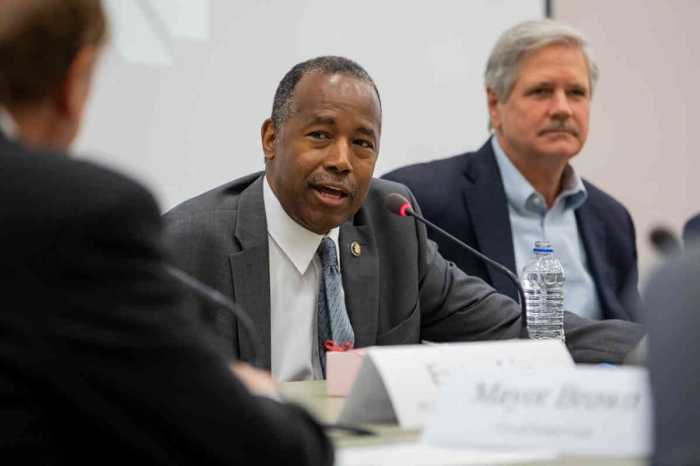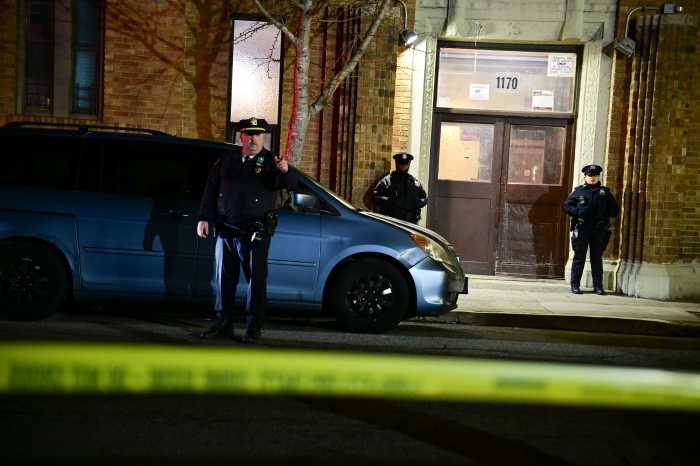A Trump Administration proposal aimed at giving federally funded homeless shelters the right to turn away transgender individuals would also give those facilities the green light to use discriminatory stereotypes based on physical characteristics in an effort to determine a person’s gender identity, according to Vox.
The Department of Housing and Urban Development (HUD) first announced the rule in a July 1 press release that seemingly represented a follow-up to the administration’s proposed rule in May of last year that sought to allow federally-funded shelters to ban transgender and non-binary folks or force them to live with individuals of a different gender identity. That rule, which covered both bathrooms and shelters, entailed giving facilities the ability to enforce discriminatory policies by citing privacy, safety, practical concerns, religious beliefs, or the gender indicated on a person’s official ID documents.
Facial hair, Adam’s apple among factors providers can use to demand proof of gender or reject applicants
This year’s proposed rule has yet to be published, and the administration only published a press release stating that the proposal is aimed at modifying the 2016 portion of the Equal Access Rule — which bans discrimination on the basis of sexual orientation and gender identity in federally-funded housing — in a way that “allows shelter providers that lawfully operate as single-sex or sex-segregated facilities to voluntarily establish a policy that will govern admissions determinations for situations when an individual’s gender identity does not match their biological sex.”
The press release also stated that the rule, just like the one issued last year, would require the policy to be consistent with state and local law — an indication that the rule is most likely to be enforced in areas that have yet to implement non-discrimination protections based on gender identity.
While it is anticipated that the Supreme Court’s ruling last month ensuring employment discrimination protections for LGBTQ individuals will eventually be embraced by courts as the governing precedent in areas beyond employment, that ruling on its face is confined to employment for now.
Vox obtained a leaked version of the new proposal, which stated that shelters can make a determination about an applicant’s gender by using “factors such as height, the presence (but not the absence) of facial hair, the presence of an Adam’s apple, and other physical characteristics which, when considered together, are indicative of a person’s biological sex.”
Such characteristics are not necessarily an indication of an individual’s gender identity, and judgments based on appearance could be used to question, block, or otherwise harass a wide array of gender nonconforming applicants.
The rule goes on to state that if a shelter provider determines that a person’s appearance does not match a shelter’s rigid definition of gender, the provider can ask the applicant for government identification.
The rule bears striking resemblance to Idaho’s ban on transgender girls and women from participating in school sports, which allows individuals to lodge disputes about an athlete’s gender identity.
The Trump administration has sought to undercut trans rights on a number of fronts, including mounting an all-out campaign to scale back LGBTQ discrimination protections in healthcare settings and education. The administration has also banned transgender folks from serving in the military.
HUD Secretary Ben Carson called the latest proposal an “important update” that “will empower shelter providers to set policies that align with their missions, like safeguarding victims of domestic violence or human trafficking.”
In fact, however, transgender and non-binary victims of human trafficking or domestic violence would likely be rejected from certain homeless shelters should the providers opt to adapt transphobic policies. Given the trauma such individuals have experienced, the alternative of staying in a shelter full of people of a different gender identity — which is all that the HUD rule would be offer them — would be particularly fraught. That could contribute to increased housing insecurity in such a way that disproportionately impacts transgender and non-binary individuals.
To sign up for the Gay City News email newsletter, visit gaycitynews.com/newsletter.

































